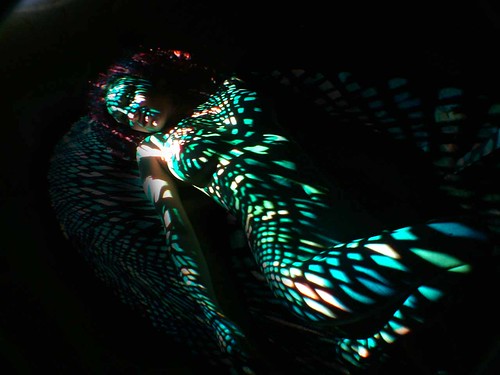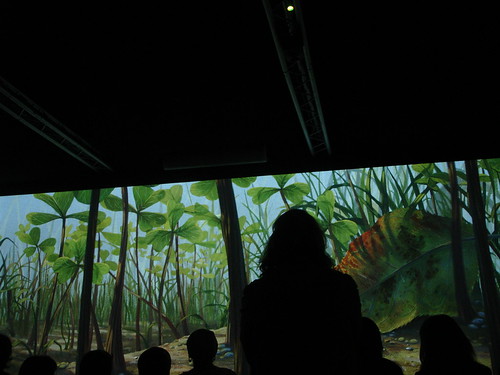Monday, 12 July 2010
Japanese woodcut inspired animation
Claire Curneen

The piece entitled 'Blue Series Lady' instantly caught my eye, with my current view for natural elements and the body as a canvas. I did a quick sketch and moved on.

After an hour or so spent in the rest of the museum I couldn't stop thinking about the sculpture, and so I returned and drew it again.

Cureen's website can be found HERE, again some interesting videos of the artist talking about her work.
Some other images of her pieces can also be seen here:



HOKUSAI

I have always loved this image, a copy of which can be found at the Fitzwilliam. And again, the act of stopping studying and sketching allowed me time to appreciate it that much more.

This lead me to being thinking about japanese artwork, particularly from this period of the 1700's (more info to come)
It was also really interesting to see this work along side the images of Hambling. The different styles seemed a minor issue when it comes to capturing the power and movement of the natural landscape. This excites me too.
Maggi Hambling - Fitzwilliam Museum
27 April - 8 August
A major exhibition of new sea paintings by Maggi Hambling, one of Britain's most distinguished contemporary artists.
Bringing together a powerful group of large-scale paintings depicting the power and energy of the North Sea - a number of which are on public display for the first time - this exhibition reveals the artist's long-standing fascination with the elemental character of the sea off the Suffolk coast. Among her most ambitious in scale, these evocative and sensual portraits of the wave demonstrate Hambling's increasingly bold way of working, confronting the viewer with all the power, grandeur and beauty of the sea.


I was particularly drawn to this one image from a room filled with very similar pieces. I think it's Hambling's ability to capture the awesome natural movement and force of the subject in a still image that pleases me. I found that when I began sketching I was trying to capture the movement and force of the lines and texture that she had created, rather than those of the waves.
This process came as a pleasant surprise to me, and an intriguing one at that. The interpretation of natural movement taken from a previous interpretation.

There is a great video on the Fitzwilliam website of Maggi talking about her work at the gallery. Link is HERE
The Fitzwilliam Museum

Last week I found myself in a position where I was unsure where to go next. There are a number of different ideas floating around at this point, but I needed something else to bring to the mix.
I jumped in the car and went to Cambridge for the afternoon. I grew up 20 mins away from the city, and I now live about an hour away. I know the city very well, but mainly where all the shops, restaurants and bars are. Somewhere I hadn't been before was the Fitzwilliam Museum. In saying that, I probably have been on a school trip before, but if you're a keen follower of my work, you'll understand that I have no memory of this.
So I ventured there with eyes a new, and had a great time walking around it's many galleries. Photography is not allowed, so I went in with my sketch book and selection of pens. Standing, studying and sketching the work in a gallery allows you to appreciate it in a different way to the normal, walking, slight pause of appreciation, and move on to the next process I usually adopt.
The next couple of posts are a document of my findings and the resulting conclusions.
I will continue to take this approach to all future exhibitions I attend. And I recommend you do too.
Friday, 9 July 2010
in a bit
I did spend a beautiful couple of hours in the Fitzwilliam Museum (Cambridge) yesterday, where much inspiration was found.
I'll update when it's comfortable enough to do so.
Wednesday, 7 July 2010
Klaus Obermaier
> What choreography emerges when software is your partner?
> When virtual and actual image space share the same physics?
> Where everything that moves on the stage is both interactive and independent?
> And any form, dancing or still, can be transformed into a kinetic projection surface?
Check out Klaus Obermaier's website here
Body Projections
Following on from the 10 years ago project, I'm planning another shoot in the next few months with a new model.
Currently working on the images I want to project and more importantly, the why.
In regards to Man Ray's Violon, i'm particularly drawn to the notion of the projected image taking on a new meaning within the context of the human canvas.
Pixar Exhibition London
In May 2006 I visited this exhibition at the science museum. Apart from being a thoroughly enjoyable romp, I can recall a section that projected the story of Pixar so far onto an incredibly wide wall. There were no seats, it was basically a long corridor, with maybe 5 or 6 projectors displaying the scenes. At times there were 5 different sections and others the images blended together to form complete panoramas.
Will continue hunting down footage of the installation.
I made this
This one has both of those qualities, but it was an early attempt to explore this idea of 'Artificial Nurture'
It's a cheap and easy trick using paint on texture effects in MAYA
Life in a day project
For a start, I'm not Ridley Scott
Pipilotti Rist - Pour your body out (7354 Cubic Meters)

"Pipilotti Rist's lush multimedia installations playfully and provocatively merge fantasy and reality. MoMA commissioned the Swiss artist to create a monumental site-specific installation that immerses the Museum's Marron Atrium in twenty-five-foot-high moving images. Visitors will be able to experience the work while walking through the space or sitting upon a sculptural seating island designed by the artist."
a special website ici
Jennifer Steinkamp (Thanks Jared)
Jennifer: "Jimmy Carter" is a site-specific video installation that fills large walls of the gallery; thousands of computer synthesized ... flowers swing back and forth. The flowers create an illusion where the space seems to dematerialize. It feels as though the walls are moving along with the flowers. The work is synthesized with software; it never existed in reality, only as code. The striped imagery transforms the architecture, while in turn the art is transformed by the same architecture. This creates an experience for the viewer, in-between a real and imaginary space. Steinkamp has come back to these particular ideas over and again in various installations. Her artwork utilizes computer animation to craft immersive interactive projection installations. Three-dimensional computer graphics are the basis of her animation; animation that takes full advantage of the computer's ability to create motion and points of view that are not available by any other means.
EYE CATCHING
Jennifer: "Eye Catching" was created for the historic Yerebatan Cistern. Three computer animated trees were projected on the walls ... of the cistern which respond to two ancient Medusa Heads that are used as column supports in the cistern. Curiously, one is placed upside down, while the other is on her side. Animated enchanted trees sway while their branches move like Medusa's serpentine hair. The installation is meant to be a celebration of the power of female sexuality and Medusa's beauty.
X-ROOM
Jennifer: I constructed two red criss-crossed passageways with curved corners inside the gallery space. Vertical projections of spinning, undulating ... meshed cylinders created optical moir effects. The sound, space and the visual created an experience simultaneously mechanical and sensual.
Thanks mike
Mike sent me a link to this piece, which I've seen before but can't remember where, no doubt he'll refresh my memory, and I'll update this post, but until then, just enjoy.
Cindy Sherman - Rear projection

During the early 1980's Sherman began experimenting with colour photography and rear projection. The projected scenes allowed Sherman to be photographed on location, without actually having to be there. The images pose questions in regards to their authenticity, something doesn't look quite right. The reason for this is that it isn't.

Man Ray - Le Violon d'Ingres, 1924
Monday, 5 July 2010
Only the crumbliest flakiest advert
a beautiful idea taken from McQueen's Kate Moss hologram introduced to me a while back by the constantly missed Mr Matthew Oaks.
Stabilize tests
Nothing too exciting came of this other than the fact that it didn't really work, but if i went out again and shot with this result in mind, some good could come of this.
The video ends with me swinging a mug around my office as you would expect.
oh.....
This isn't my idea, but it's a touch too close to the bone for my liking. I've gone elsewhere now anyway.
10 years ago
It was only 10 years ago, but it's crazy to think back then I didn't have access to any digital projectors or a digital camera. Everything was shot on slide film, and projected with a slide projector and an OHP.
I got 68% for the work, and that was all that mattered at the time.





I had forgotten all about these images until a few weeks back when looking through a old hard drive I found them. They fit in with my current process of thinking in terms of projection, not only as a technical exercise, but as a theoretical standpoint. I feel the strongest images here are where I've projected an image of myself upon the subject, in this case the subject is my at the time relatively new girlfriend. How dare I have such audacity at the time to do such a thing.
Interesting....
Oh wow (thanks mr hudson)
This time round the link was Daniel Brown part of the play/create group. At the time we couldn't see the website for lack of pluggins but I have just spent a great deal of time just playing with their intereactive pieces @ http://www.play-create.com
I have seen some of browns work before at the DECODE exhibition a few months back at the V&A. It was a bit of an odd installation though which i don't think many people were fully aware of. It was actually being projected on the wall before you went into the main exhibit, a giant 10 ft+ projection of plants and flowers, being created via a computer.

Now this is something that I've been thinking about for a number of years now, it's actually on my CV as a work in progress which I started thinking about 4 or 5 years ago, but haven't had the time or visionary breakthrough to pursue.

It's the concept of recreating natural movement or natural organic growth but within a computer, something I called 'Artificial Nurture.'
I'll come back to this later as the connection has only come to me mid blog.
Anyway, check out play create and Daniel Browns website too.
Friday, 2 July 2010
Rafael Lozano- Hemmer



Another piece that interested me formed part of ARS electronica in Linz, entitled: DISPLACED EMPERORS.
Displaced Emperors was an installation that used an “architact” interface to transform the Habsburg Castle in Linz, Austria. Wireless 3D sensors calculated where participants pointed to on the façade and a large animated projection of a hand was shown at that location. As people on the street "caressed" the building, they could reveal the interiors of the Habsburg residence in Mexico City, Castillo de Chapultepec. In addition, for ten schillings, people could press the "Moctezuma button" and trigger a temporary post-colonial override consisting of a huge image of the Aztec head-dress that is kept at the Museum für Völkerkunde in Vienna, followed by a parade of images of jewels from the Austrian-Hungarian Empire, set to music by Toña la Negra.




Details of all of Rafael's work can be found on his website.







